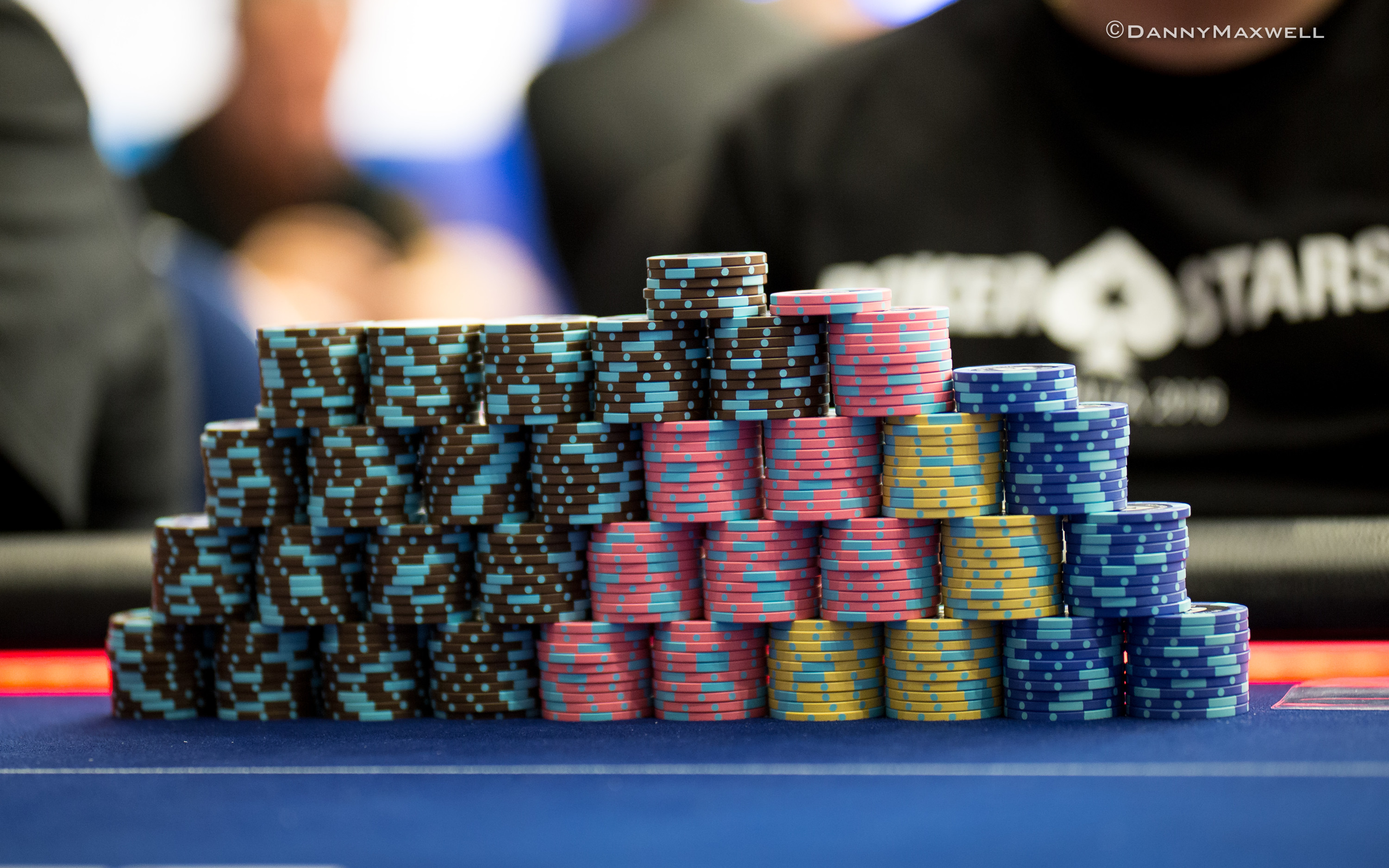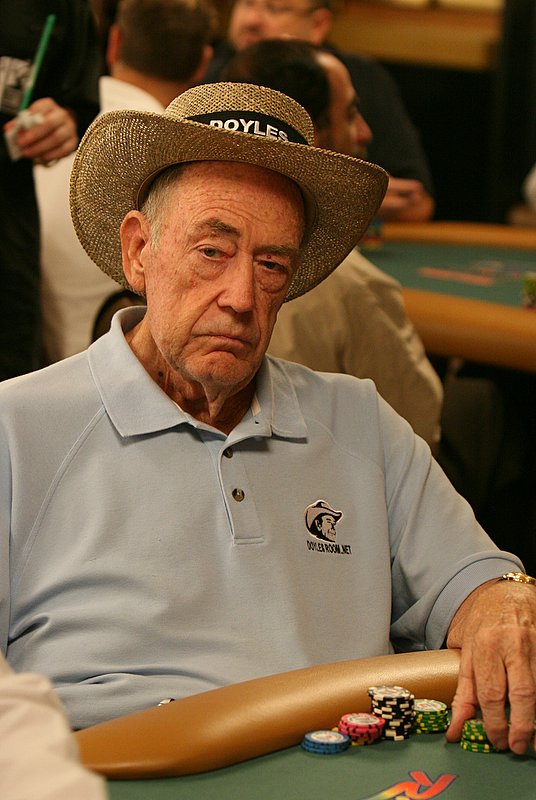Poker Brunson Hand
Doyle Brunson, saluting the crowd after playing his final hand at the World Series of Poker. (Photo: Drew Amato/Poker Central) The longest ongoing chapter in poker history, Texas Dolly at the World Series of Poker, has come to an end.
High Stakes Poker returns Dec. 16 with 14 new episodes on PokerGo with 20 of the top cash grinders in the world. Some new faces emerge, but many famous players such as Phil Ivey, Phil Hellmuth, and Tom Dwan will be back in action.
- Doylebrunson.com is the official personal site of Legendary 10 time World Series of Poker Champion www.DoyleBrunson.com, is exclusively powered and managed by Level Media on behalf of Doyle Brunson.-Information in this document is subject to change without notice.
- Doyle Brunson has been playing high stakes cash games longer than many of his opponents have been alive. In this hand of No Limit Hold'em, he makes a full ho.
The legendary cash game started during the poker boom in 2006 and was an instant hit. The series ran on the Game Show Network (GSN) until 2010.
♠♠♠ For more on the debut of the eighth season of High Stakes Poker including insight from Phil Hellmuth and Doyle Brunson, click here. ♠♠♠
Poker Brunson Hands
Ten years after the show ended, reruns and YouTube clips have kept its popularity alive. The high rollers are now back at the table and viewers will be pleased.
High stakes poker coming back guys. Hope I run as good as last time pic.twitter.com/m8auOjG2ic
— Tom Dwan (@TomDwan) October 27, 2020
High Stakes featured some huge moments through the years – highlighting some of the biggest bluffs ever caught on camera. Viewers also saw how fast a million bucks could swing from player to player with the turn of a card.
With the new season debuting this week, here’s a look at some of the most memorable hands.
1 – Greenstein’s Aces get cracked

Barry Greenstein went toe to toe in this hand for heaps against Sammy Farha. Greenstein is in a dream situation when he gets it all in with his A♥A♣ against Farha’s K♣K♦.
The hand turns into a $361,000 nightmare when Sammy hits a K♥ on the flop.
2 – Brad Booth bluffs Phil Ivey
Recently Brad Booth was the center of a missing person case. Luckily Booth was located and confirmed to be okay. Many will remember Booth for one of the most epic bluffs ever against poker legend Phil Ivey.
Ivey held K♥K♦ and Booth did him dirty with 4♠2♠. It is quite memorable hand against one of the biggest names in the game.
3 – Gus Hansen hits quads against Daniel Negreanu
Daniel Negreanu’s 6♠6♥ went heads-up against Gus Hansen 5♦5♣. Both players hit a set on the flop of 9♣6♦5♥. The fireworks began and the pot exploded. Hansen ended up winning more than $575,000 when after making quads on the turn.
4 – Aces no good Barry Greenstein
Greenstein had his luck tested again in as he reraised with A♦A♣ preflop. Dwan called with K♠Q♠ and Peter Eastgate with A♠K♥. The pot was already at almost $50,000 before the flop.
The flop came Q♥4♠2♠, creating a giant hand about to erupt. Dwan ended up cracking Greenstein in a $919,000 pot – one of the biggest cash game pots ever on television.
5 – Jamie Gold cut down by Patrik Antonius
Fresh off of his 2006 World Series of Poker Main Event victory, Jamie Gold appeared on the show. His duel with Patrik Antonius stands out. After an Antonius raised to $4,000, Gold three-bet to $14,000 with K♠K♦ and Antonious called with A♠J♦.

The flop brought 3♠Q♦10♥ and Antonious called Gold’s $15,000 bet. The turn then dropped the K♥. Action kicks up as both players get it all in. The players decide to run the river three times for insurance and Gold sucks out on two of those.
Where to see more High Stakes Poker
Along with the new season, all the classic episodes can be watched exclusively on PokerGo. Poker fans will see plenty of high stakes action mixed with some trash talk and fun.

“It truly represents a raw, unscripted high stakes cash game,” legendary televised poker producer Mori Eskandani says. “We don’t make the rules, we react to the rules players make. That’s why you will see many cash game situations like running it twice, sleeper straddle, and more in HSP first.”
Here’s an inside look of the new High Stakes Poker set and some things to watch out for.
Take an exclusive, behind the scenes tour of the High Stakes Poker set at the PokerGO Studio with Jeff Platt.
New season of High Stakes Poker debuts Dec 16th, only on https://t.co/2RQh5RNM18! pic.twitter.com/QUDsg0Ui3A
— PokerGO (@PokerGO) October 30, 2020
“Trouble hands.”
For some players just starting out at no-limit hold’em, every hand might be considered a “trouble hand.” But once you gain some experience and begin to sort out how different starting hands compare and tend to play, that category of “trouble hands” begins to shrink to a certain few that in most situations need to be played with caution.
Let’s take a look at what three hold’em greats have had to say in particular regarding these “trouble hands.”
Doyle Brunson
Many years ago Doyle Brunson devoted a special section to “Borderline or Trouble Hands” in his discussion of no-limit hold’em in Super/System. “They’re hands you can lose a lot of money with,” he explains, “so you should play them very cautiously.”
The hands to which Brunson refers include the following:
- , ,
- , ,
- ,
- ,
For Brunson, these represent hands he does not recommend calling raises with generally speaking, although he qualifies that advice by saying he would do so if certain conditions were present — e.g., when playing from late position, when there has been a raise and a call in front of him (giving him good odds to come along), or when the cards are suited (often tipping him in favor of playing the hands).
He then goes on to explain why the hands can be attractive to play, with straight possibilities and (if suited) flush possibilities being a big part of their attraction. But he advises his readers to be careful with such hands after the flop, concluding with a general warning that “the important point to remember about the trouble hands is when you do get a flop with them you don’t want to get heavily involved. You should just try to play the pot as cheaply as possible.”
Or not at all. Brunson’s special dislike of over the years has been well chronicled. In fact, at one time the hand was ironically named after him because he claimed never to play it.
Dan Harrington
Writing many years later, Dan Harrington in Harrington on Cash Games added his own thoughts about the “trouble hands,” narrowing the list somewhat to focus on five in particular:
- , ,
- ,
(Harrington takes out the hands with aces and the lower connectors as he discusses them separately.)
If you look at the hands he’s chosen to focus upon, he’s chosen almost all of the non-ace hands that contain two Broadway cards (except ). All are attractive to us because of the relatively high ranking of the two cards, but as Harrington explains, that is precisely why these hands tend to cause trouble.
“Since the hands all contain high cards,” he explains, “they look like hands you want to play, and in many cases they are hands you want to play. In no-limit hold’em, however, they require an extra measure of caution because they are easily dominated by ace-high hands or even other hands of the group.”
The Brunson Poker Hand
By “dominated” Harrington refers to the situation of sharing the same hole card with an opponent who holds a higher “kicker” or second card. If I am playing and you hold , I have a “dominated hand” that can get me in real trouble should a king come among the community cards.
That’s precisely the situation Harrington speaks of when echoing Brunson’s advice to proceed with caution after the flop with such hands. “When you play these hands, hit the flop with one high card, and then get action, you won’t know exactly where you stand. You may have top pair, with no obvious straights or flushes, and still have to let the hand go because of the implicit danger to your whole stack.”
Harrington adds further instruction about how unless you hit something big (e.g., a straight, flush, trips or better, etc.), these “are not hands to take to the river in a big pot” and how they aren’t good hands with which to be calling opponents’ raises.
Daniel Negreanu
In More Wisdom Hold’em for All Players, Daniel Negreanu drills down even further into the category of “trouble hands” to focus on one in particular — — a hold’em starter he calls “a dubious hand.”
“Novice players commonly overvalue the strength of when they flop a pair to it,” writes Negreanu, again highlighting the same tricky postflop spot both Brunson and Harrington draw attention to as well. As he explains, after a queen-high flop (for example), “most amateur players... aren’t sophisticated enough to know when to play the hand to the river and when to let it go.”
Like Brunson and Harrington, Negreanu is not keen on calling opponents’ raises with , and while he also points out that being suited helps, his main point is for players not to “get fooled into thinking is a premium hand.”
By the way, once Negreanu came up with a different nickname for , one not named after Brunson. He called it “1.4” — a reference to how he estimated he'd lost $1.4 million with it!
Conclusion
To summarize the advice of these three writers regarding “trouble hands,” proceeding with caution is most obviously the common message. Understand that flopping top pair with hands like , , , , or against a single opponent might well be enough to win a pot, but in most cases don’t be too anxious to build a big pot as you might be dominated.
Meanwhile against multiple opponents, flopping just a pair with these “trouble hands” is likely a spot in which you should find a fold, especially when facing others’ betting. However, those might be situations in which you do flop straight or flush draws and can get reasonable odds to proceed.
Even so, don’t let the “trouble hands” get you into too much trouble, and know that smart preflop decisions with them can help you avoid greater difficulty once the community cards come to complicate your life further.
Get all the latest PokerNews updates on your social media outlets. Follow us on Twitter and find us on both Facebook and Google+!
Poker Brunson Hand Sanitizer
Tags
cash game strategytournament strategyno-limit hold'emstarting hand selectionDoyle BrunsonDan HarringtonDaniel Negreanupoker booksRelated Players
Daniel NegreanuDoyle BrunsonDan Harrington